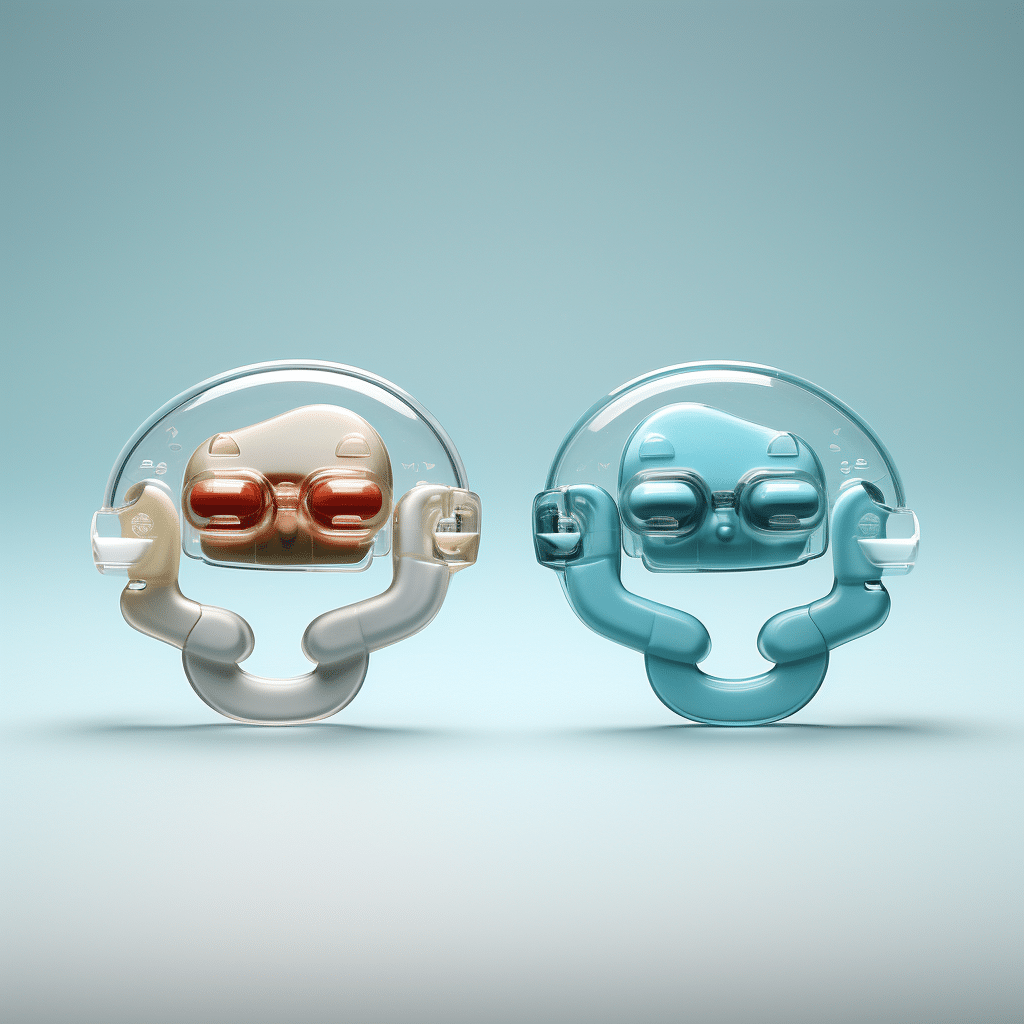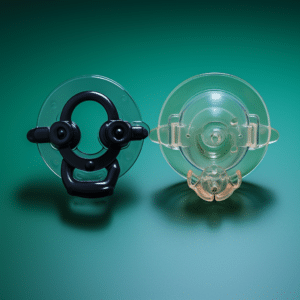
Flat vs Round Pacifiers: Pros and Cons Explained
Round pacifiers tend to provide more comfort for babies because they’re shaped like an actual teething ring, so they’re easy on their gums while they’re teething.
Flat ones are usually made from silicone or rubber with no sharp edges or corners that could cause discomfort or irritation—they’re also easier to clean since there’s nothing inside them!
While most parents will agree that either pacifier works equally well in providing relief and comfort for their baby, some believe that the pacifier’s flat shape is more effective than the round shape.
This article will look at both sides of this debate and give you an overview of both round and flat pacifiers.

Flat Pacifier Vs Round: Overview
Flat Pacifier Overview
A flat pacifier is an excellent option for parents who want to avoid the unnecessary bulk of a traditional pacifier. It is designed to be as small as possible while providing the same benefits as a traditional pacifier.
Typically, it does not come with moving parts or difficult pieces that could cause choking hazards to your toddler. So, you don’t have to worry about your baby being able to remove the pacifier from their mouth when feeding or whether they decide to swallow it.
Flat pacifiers have several advantages over traditional round or curved pacifiers. First, they are easier for babies to hold and manipulate compared to their counterparts.
Also, they tend to be more comfortable for babies since they don’t roll away when laid on their bellies or backsides like traditional round or curved ones do. Then finally, they are often found in larger sizes than other styles.
Round Pacifier Overview
Round Pacifiers are the most popular types available for babies. They are available in multiple materials, starting from silicone to rubber.
Round pacifiers have an advantage over all other pacifiers because they are easier to use. They fit easily into a baby’s mouth, so you don’t have to worry about your child choking on them as traditional pacifiers do.
Because they are shaped like a round object, they don’t require much dexterity on your baby’s part, either! That makes them perfect for little hands that aren’t quite ready for the responsibility of holding their pacifier yet.
Choosing the Best Pacifier for your baby
When choosing the best pacifier for your baby, there are many factors to consider. Here are a few:
- Size
Some babies grow out of their pacifiers much faster than others. If your baby is old enough to use a full-sized pacifier, buy one that fits his mouth well. However, if your baby is still using a newborn size, buy a larger size so they can grow into it over time.
- Design
Pacifiers are designed to be as comfortable and convenient as possible. They come in various shapes and sizes, from rubber teething rings to plastic rings and silicone nipples.
The design of a pacifier can have a significant impact on how well the pacifier fits your baby. For example, if your baby has an underbite, you may want to choose a pacifier with a wider base so it will slide easily into the mouth.
If your baby is sensitive to nipple discomfort or reflux, you may want to choose a pacifier with softer materials for easier handling.
- Material
Pacifiers are mostly made from plastic or silicone but come in different materials like leather or cloth. However, the material used to make your baby’s pacifier may influence how well it cleans and protects them against bacteria and germs.
If your baby has particularly sensitive skin, you may want to look for a pacifier made from hypoallergenic materials like plastic or silicone instead of those made from natural materials like wood or rubber.
- Durability
Another important factor to consider when choosing a pacifier is durability. You don’t want one that will break easily after a few months of use — even if it looks cute! Look for ones made from silicone or plastic instead of rubber or vinyl — these materials are more durable and won’t get chewed up by your toddler.
Round Vs. Flat: Which One Should You Choose?
Round pacifiers are the most popular for babies, but some parents prefer their flat counterparts, who may seem more comfortable with their babies.
However, the shape of a pacifier makes it so effective at calming infants during sleep, either round or flat. The rim of the pacifier creates a suction effect that helps soothe a baby’s mouth and throat, which relieves soreness or discomfort.
However, it all comes down to personal preference, as each type has advantages and disadvantages.
Safety Precautions when choosing and using Pacifiers
Pacifiers are a safe and effective way of relieving your baby from pain and discomfort. They are an ideal tool to calm your baby down when they are having their first temper tantrums.
However, there are some safety precautions that you should take when choosing and using pacifiers:
- Choose the right size
The ideal pacifier size will comfortably fit your baby’s mouth and not fall out. Check the size of your baby’s current pacifier before purchasing a new one.
- Use a short tether
A short tether means that the pacifier does not weigh as much as it would if its length were extended to keep it from falling out of your baby’s mouth.
For example, if you are holding your baby on your hip and he drops his pacifier, you will have to reach down with your hand to get it before he can swallow it again or lose it forever! A short tether keeps the pacifier from getting lost down a crack in your sofa or carpet.
- Inspect the shield
You must inspect the shield on each pacifier before giving it to your child so that you know that there are no cracks or tears in it. This will ensure that there will be no problems when it comes time for your child to use it again later on down the road.

Bottom Line
In the end, you should consider paying extra money for a high-quality silicone pacifier. Giving your baby a flat pacifier may seem like a small decision. But when you meditate on the associated health concerns and the potential havoc. It can wreak on your child’s mouth and teeth, you’ll likely change your mind.
Take time to read reviews of your different options to know what type will be best for your child. All in all, it comes down to your preference.